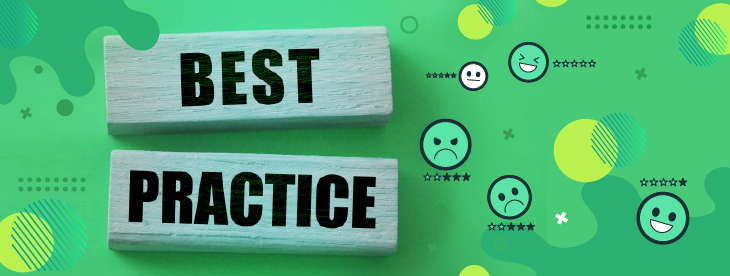Enhancing Customer Experience via Employee Engagement

When your company’s culture centers on a sense of loyalty to customers and employees, you’ll inspire reciprocal loyalty through every action, fostering strong employee engagement.
The idea isn’t new.
Twenty years ago, James L. Heskett and his co-authors described a concept that now underpins a vast number of organizations: the Service-Profit Chain. In short, they proposed that investing in talent, technology and training leads to increased customer satisfaction, which in turn creates greater profit.
The same model still applies today: competitive advantage is found not in PR spend or market share, but in developing insight to make the right decisions throughout your organization.
To understand why it’s easiest to start at the end of the Service-Profit Chain and work our way back to the beginning.
The end goal: revenue growth and profitability
OK, you don’t need an explanation of why you want to increase revenue and make a profit. Even non-profit organizations need money to achieve their goals. What you’re looking for is the “how”.
One of the biggest drivers of revenue and profit is customer loyalty. A loyal customer keeps on spending money with you — and their total lifetime value includes all their referrals and recommendations too.
But how do we create loyal customers? The simple answer: by delivering satisfaction.
Not every satisfied customer stays loyal to one brand, though, so the more complex (and more accurate) answer is that you can only get loyalty by giving loyalty. When your organization’s culture centers on a sense of loyalty to customers, employees and other stakeholders, you’ll inspire reciprocal loyalty through every action.
Service value and satisfaction
To satisfy —and demonstrate your loyalty to — your customer, you follow the foundations of good business practice. First come up with ideas that can provide the results customers want, then design and deliver those products and services to suit your target customers.
How do you do that? Well, the obvious way to find out what your customers want is to ask them. There are lots of ways to do that, whether it’s a mobile-friendly survey, a feedback card you give them in-store, an online community, or a research consultancy that runs panels and focus groups for you.
Once you know what results they want, designing a solution to suit is the tricky part. Sticking with your guiding principle of giving loyalty to receive loyalty, you may go through several iterations before you get it “just right” for your customers, but you’ll get there in the end if you keep collecting helpful feedback.
Here’s the thing: not all of that feedback should be from your customers or even from your target market segment. If you really want to get a competitive edge, ask employees for ideas. The more engaged your employees are, the more smart ideas they’re likely to bring you.
When it comes to delivery, employee engagement is the key yet again. Engaged employees are typically more productive, more considerate of the customer experience, and more likely to stay with the company long enough to develop a powerful understanding of how things work. They’re the people who will deliver loyalty-inspiring customer experience.
The value of employee engagement
Let’s clarify one point first: employee engagement is not the same thing you analyze through your “Voice of the Employee” program. When you get employee engagement right, your organization’s employee’s aren’t merely happy in their work. They’re committed to discovering opportunities and making improvements.
In particular, an engaged employee isn’t interested only in issues that affect the workforce — they spend time thinking about issues that affect the customer, too, from products and services to processes and interactions. And they’re keen to share their conclusions with you.
Frontline employees hear a lot of unsolicited feedback from customers. This gives them access to insight no customer satisfaction survey can provide. For example, employees can tell you about customer comments even if that customer never responds to a survey. They can tell you what makes customers smile the most, and what customers say about competing products or services. This kind of information shouldn’t be hidden away!
So why is it that, according to Forrester Research, only 36% of B2B and B2C companies with Voice of the Customer programs collect and report employee insights on customer issues? Worse, why do 31% collect employee feedback but then fail to report it?
Start your employee engagement engines
To set the whole Service-Profit Chain in motion, you have to start at the beginning by creating an environment and culture of employee engagement.
Ask for employee feedback. Welcome unsolicited feedback. Take the “pulse” of your employees with frequent, short, anonymous surveys to identify trends. Collect unstructured ideas as well as structured responses. Let employees choose when, where and how they share their thoughts with you. Always ask “why” as well as “what”, and be ready to listen to the answers.
See the connection between employee engagement and customer experience in your organization by integrating feedback from both sources.
Then analyze, share and use that information to make decisions — about hiring, about professional development, about recognizing and rewarding excellence, about tools and equipment, about anything that influences employees’ effectiveness and enjoyment in their work.
Guide and train supervisors well. A team that doesn’t trust or believes in its supervisor is rarely happy or productive, no matter how hard senior managers try to address the problem with top-down solutions. And a supervisor who feels supported is far more able to support the employees on his or her team.
Give loyalty to get loyalty, and give engagement to get engagement. Give employees the things they need to excel: not just tools and training, but a sense of purpose, autonomy and ownership of their role. Make them proud enough to be ambassadors of your organization.
Now that you’ve primed the start of the chain, roll it forward through time and see what happens. Revenue and profit are waiting at the end.
Want more?
If you have comments or questions, reach out to us on Facebook, or email us anytime. We’d love to hear from you.










